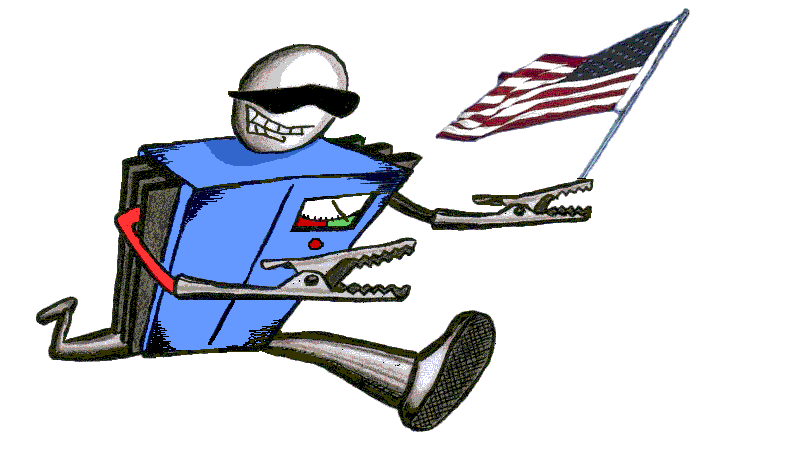Chargingchargers.com
Industrial Quality at Affordable Pricing
 |
LIVE ORDER & TECH LINES: 7:30 AM TO 4:00 PM PACIFIC TIME M – F NO SALES TAX
Toll Free Order Line Only: (877) 405-0978 Monday – Friday Tech & Order Line: (541) 582-4629 Monday – Friday ORDER ONLINE ANYTIME Email Tech Questions: info@chargingchargers.com Fresh, New Stock. No Used or Reconditioned, at the Best Price! WE NOW ACCEPT PAYPAL! |
View Cart
|
| TUTORIALS | ABOUT US | BRANDS |
| BATTERY CHARGERS | INVERTERS | DC CONVERTERS | SOLAR CHARGERS | SEALED BATTERIES | BATTERY DESULFATION |
Marine Battery Charger Tutorial
There are some issues to be clarified with respect to a marine battery charger versus a regular battery charger. The term 'marine' applies to the charger and the environment or application it will be used in. It has nothing to do with the batteries to be connected to the output. A 'marine battery' may in fact be exactly the same case, design and internal construction as another battery in the manufacturer's line, just with different terminals, or simply stainless steel nuts and bolts. They are usually deep cycle construction, or combination deep cycle/starting, and of lead acid, or sealed lead acid construction. There are some batteries specifically built and labeled for marine use, but construction is similar to other batteries, or they use vibration reducing material between the plates, which can be found in other battery types as well. Most battery chargers only differentiate between battery chemistry/construction, as in flooded, true gel cell, and absorbed glass mat (AGM). There are marine batteries found within all three types. A marine terminal is frequently a dual terminal, with a tapered automotive (SAE) post and a threaded stud (usually 3/8 inch) either next to the auto post, or coming out of the top of the auto post. But, enough about the battery.
Marine battery chargers come in a variety of models, with one or more attributes
contributing to their being classified as such. Some of the attributes are:
•Waterproof
•Vibration proof
•Mountable (mounting flanges)
•Multiple bank (multiple outputs)
and others. Applications vary from single starting battery systems, to multi-battery
systems, where some of the batteries are deeply discharged routinely, as in a
trolling motor system in a tournament fishing boat, or an electric-only boat used
in smaller lakes or ponds. Some marine applications are
live aboard situations, where shore power is available, and the charger may need
to function as a power supply as well. There are chargers that deal with these issues.
There are waterproof, vibration proof, mountable, single or multiple bank marine chargers. They are frequently used in smaller open boat applications like bass boats or electric only boats, but they are appropriate for larger applications as well, and even industrial or military applications. We have some Dual Pro units we specified for portable military hangars going to Iraq, for a 'special' aircraft application. These hangars had flexible clamshell ends that retracted by cable and electric winch. The requirement was for battery backup and chargers appropriate for the batteries and a desert environment. The sealed quality and temperature compensation attributes came into play here. We also use this charger type for generator or pump starting batteries, where vibration and outdoor environments may be encountered.
The multiple output of some marine chargers are designed in different ways. We usually prefer units that have a separate positive and negative connection for each output, and a separate microprocessor as well. This allows batteries of differing type, size, and state of charge to be connected to the same battery charger. So, a three bank charger can be used for a three battery boat with a single 12 volt starting battery, and two other 12 volt batteries in series for a 24 volt trolling motor. How the batteries are wired (i.e. series in this 24 volt situation) is not a concern for the charger, after each battery gets its own positive and negative from the charger. This attribute can be used to solve a battery charging problem involving higher voltages like 24 or 36 volts, where one of the 12 volt batteries in the string is tapped at 12 volts for lights, radio, etc., resulting in an imbalance. Using a straight 24 volt or 36 volt output charger in this case would result in improper battery charging, and shortened battery life. So, there are some charging applications that are only correctly served by a multi-bank, independent output charger. There are low (4 to 6 amps), medium (10 amps), and high (15 amps) output multi-bank chargers, with one to four banks, available in the Dual Pro line that we carry. A low output unit may be applicable for maintenance use, or a low battery use or low amp hour battery situation. A medium output charger would be applicable for medium use, such as a trolling motor used only on weekends, etc. A high output unit would be used in high amp hour battery applications (200 ah for example), or a tournament fishing application, where fairly rapid recharge is continually called for.
The other multiple bank type has multiple positive terminals and a single negative terminal. These usually have a single microprocessor. Some (most) of these units are designed for multiple banks where the banks are charged and discharged together, i.e. a group of batteries on one side of a boat, and a matching set on the other side, where both sets are parallel connected for use. The chargers don't deal well with battery banks used for entirely different functions, where one bank may be significantly discharged, and the other not. Their owner's manuals usually state that caveat somewhere. While this type is called for in some applications, like power supply situations, the design intent of the output terminals must be respected.
Home | Tutorials | Marine Battery Chargers


